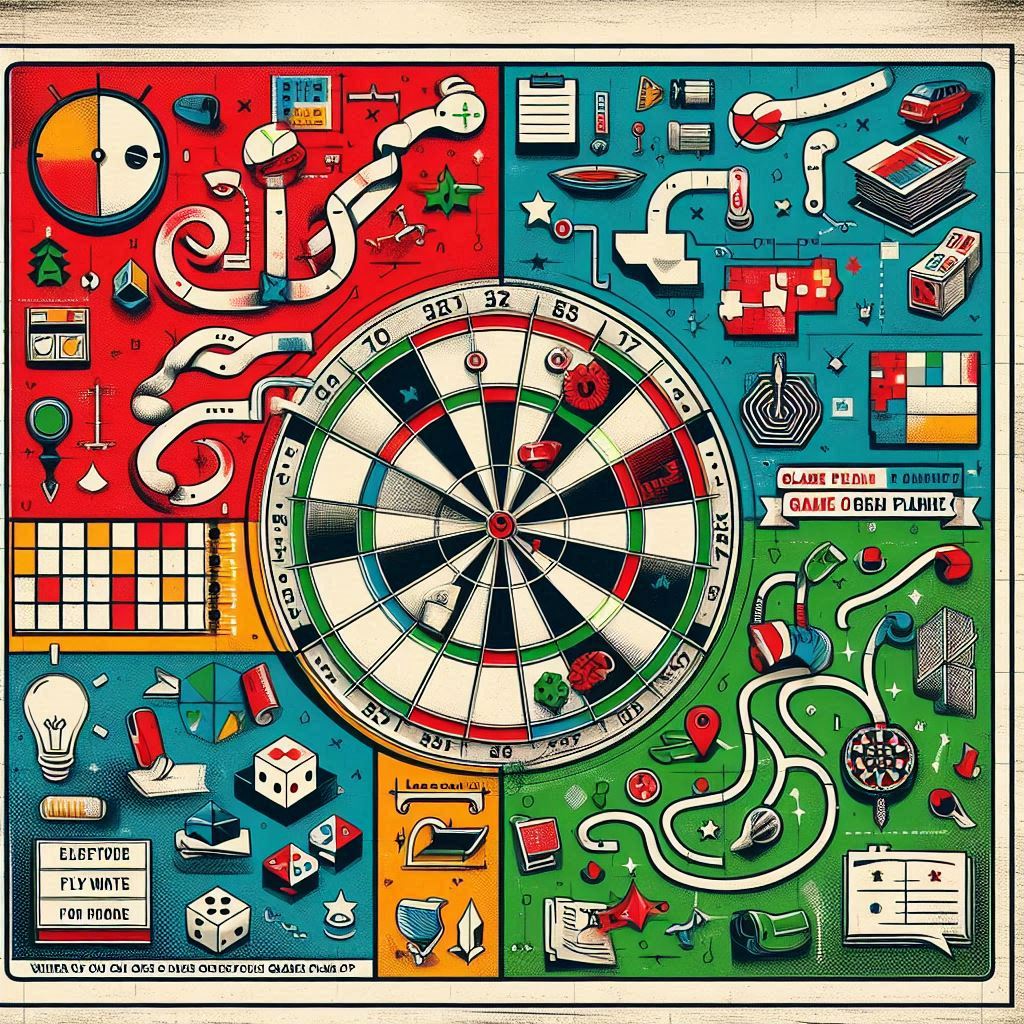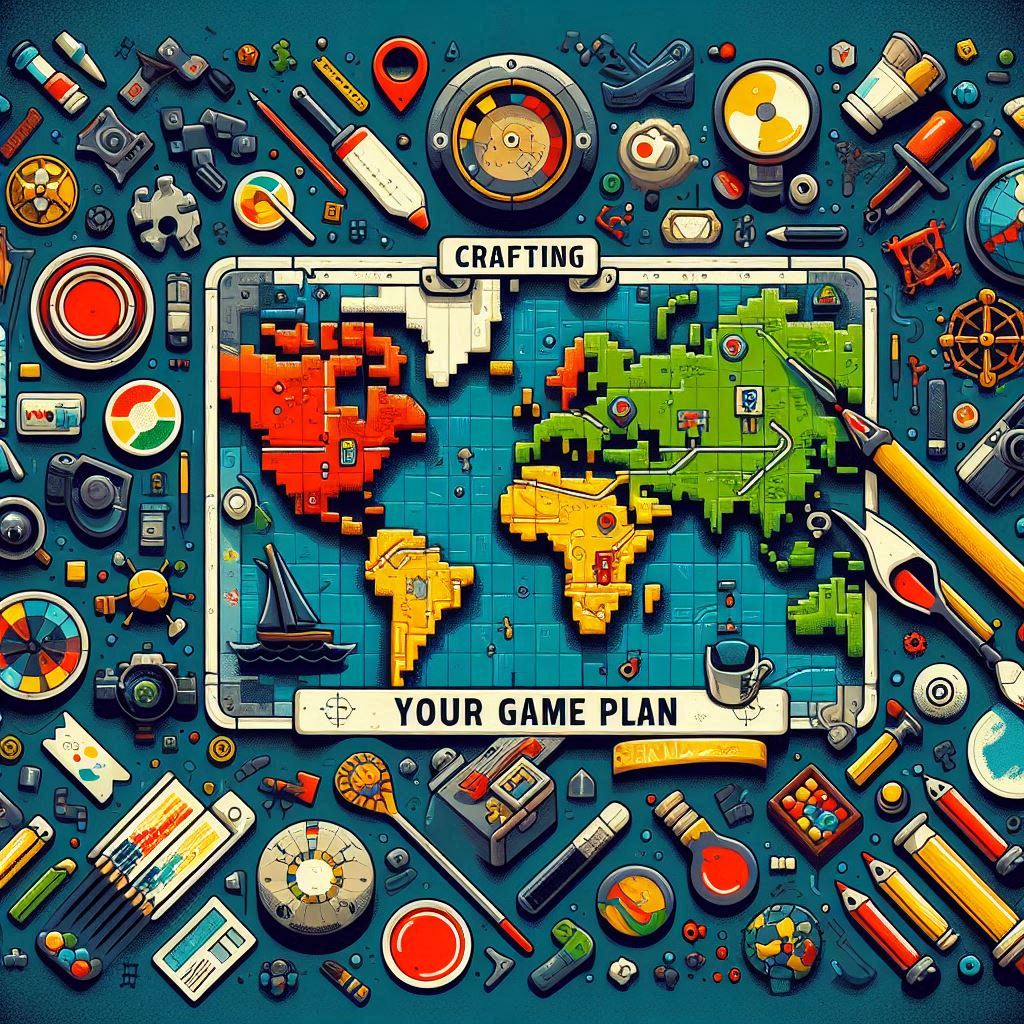What’s a Strategy Canvas and Why Use It?
Business strategy requires the right tools to visualize and analyze your company’s competition. The Strategy Canvas is one such tool. It helps businesses understand their position in the market and develop strategies to stand out.
In this article, we’ll explore what a Strategy Canvas is, how it can be used, and why it is valuable for gaining a competitive edge in business.
Understanding the Game Plan Map
The game plan map helps to create a strong blue ocean strategy. It shows the current strategy and future potential of an organization in a simple visual. When making a game plan map, organizations should consider competition, what buyers get, and their and their competitors’ strategies and costs. Executives can use templates like the Basic Game Plan Map or the ‘Blue Water’ Game Plan Map to make a good game plan map.
These templates help analyze competition and make better decisions based on a strategic analysis. John Reed of Citicorp suggested using a visual method to present strategies, so executives can understand and act on them. Executives who don’t meet these standards risk being left out of future strategy sessions. Using a game plan map is important for clear and effective strategy communication.
When Should You Use a Game Plan Map?

A Game Plan Map is very useful in strategic planning. It helps organizations understand their current situation and future opportunities.
Some situations where a Game Plan Map can be helpful include understanding competition factors, analyzing what buyers receive compared to competitors, and understanding cost structures.
In complex decision-making, a Game Plan Map helps individuals or teams navigate by showing where they and their competitors are investing. It also highlights industry factors and customer benefits.
This tool provides a visual representation to identify opportunities, threats, and market positioning. This is valuable for making informed strategic decisions.
Crafting Your Game Plan Map

Spot Who You’re Up Against
When looking at the competition, it’s important to consider key factors. Understand what buyers receive and compare your own and your competitors’ strategies. Executives can score other players by comparing cost, investment focus, products, and delivery. This helps understand competitive positioning.
Identifying and understanding the competition is important for crafting a game plan. It shows where businesses and competitors are investing, areas of competition, and what customers receive. This helps make informed decisions, build a strategy, and gain a competitive edge.
What You’re Fighting Over: Factors in the Game
Players in the game are fighting over:
- Elements of competition
- Offering level received across these factors
- Strategic profiles and cost structures
These factors impact the overall gameplay and strategy by determining:
- Where the organization and its competitors are investing
- The products, services, and delivery factors that the industry is competing on
- What customers are receiving from existing competitive offerings
While all these factors are important, certain ones are more crucial to focus on in the game, especially when considering resource allocation and competitive positioning.
For example, in the banking industry, banks may need to intensively focus on factors such as interest rates, fees, and customer service to gain a competitive edge.
Scoring the Other Players: Looking at the Competition
An organization can gain a competitive edge by assessing and scoring other players. To do this, they can:
- Conduct a comprehensive analysis of the competition’s strengths and weaknesses.
- Evaluate their current investment focus.
- Understand the product, service, and delivery factors the industry is competing on.
This helps in identifying areas of differentiation and potential opportunities for value innovation. Scoring the other players provides insights into where they and their competitors are currently investing, the offering level buyers receive, and their strategic profiles and cost structures.
This information enables organizations to make informed strategic decisions that address the factors of competition and align with their overall business objectives. Through this detailed assessment, organizations can refine their strategies to achieve sustainable growth and create a compelling blue ocean strategy.
Drawing Your Own Path: Making Your Moves Stand Out
To make your moves stand out and draw your own path, it’s important to consider the factors that will set your strategy apart. Crafting a game plan map involves identifying key elements, understanding competition factors, and communicating the level of offering to buyers compared to your competitors.
Visualize where your organization is investing, the product and service factors in the industry, and what customers are receiving from existing competitive offerings. A game plan map gives a clear understanding of your strategic landscape, allowing you to create a compelling blue ocean strategy.
This tool can help define your unique value proposition, optimize your cost structure, and stand out in the marketplace. By using a game plan map, you can see where you and your competitors are investing, enabling strategic moves that set you apart.
Templates to Help Draw Your Map
Basic Game Plan Map
A Basic Game Plan Map is designed to capture the current strategic landscape and the future prospects for an organization. It provides a clear visual representation of how an organization configures its offering in relation to its competitors and the factors of competition.
This tool is valuable as it helps in understanding the competition and the factors in the game by crisply communicating the factors of competition, the offering level buyers receive across these factors, and the strategic profiles and cost structures of both the organization and its competitors. In crafting a Basic Game Plan Map, it is essential to consider where the organization and its competitors are investing, as well as the product, service, and delivery factors the industry is competing on and what customers are receiving from existing competitive offerings.
By keeping these key elements in mind, organizations can develop a clear understanding of the competitive landscape and strategically position themselvesfor success in the market.
The ‘Blue Water’ Game Plan Map
The ‘Blue Water’ Game Plan Map is a helpful tool. It’s used to create a strong blue ocean strategy. It’s important for organizations. It helps them capture their current strategy and future plans visually. To make your own ‘Blue Water’ Game Plan Map, show how your offering compares to competitors. Clearly communicate factors like competition, buyer offerings, and understand your and competitors’ strategies and costs. Use this tool to understand where you and your competitors are investing.
Also, understand product, service, and delivery factors the industry competes on. Keep the strategy presentation brief and clear. John Reed of Citicorp enforced this practice for his executives by limiting their slides.

Vizologi is a revolutionary AI-generated business strategy tool that offers its users access to advanced features to create and refine start-up ideas quickly.
It generates limitless business ideas, gains insights on markets and competitors, and automates business plan creation.


